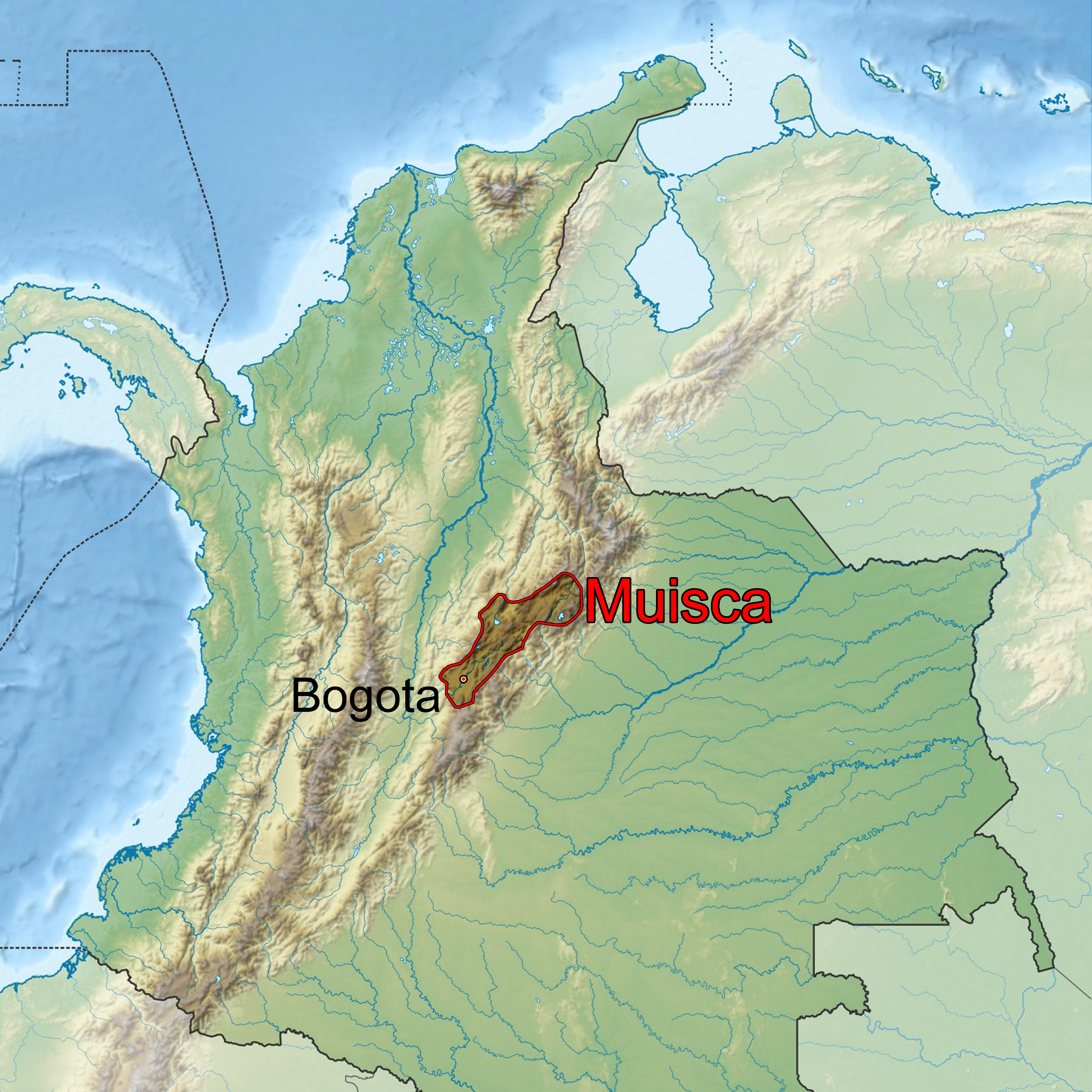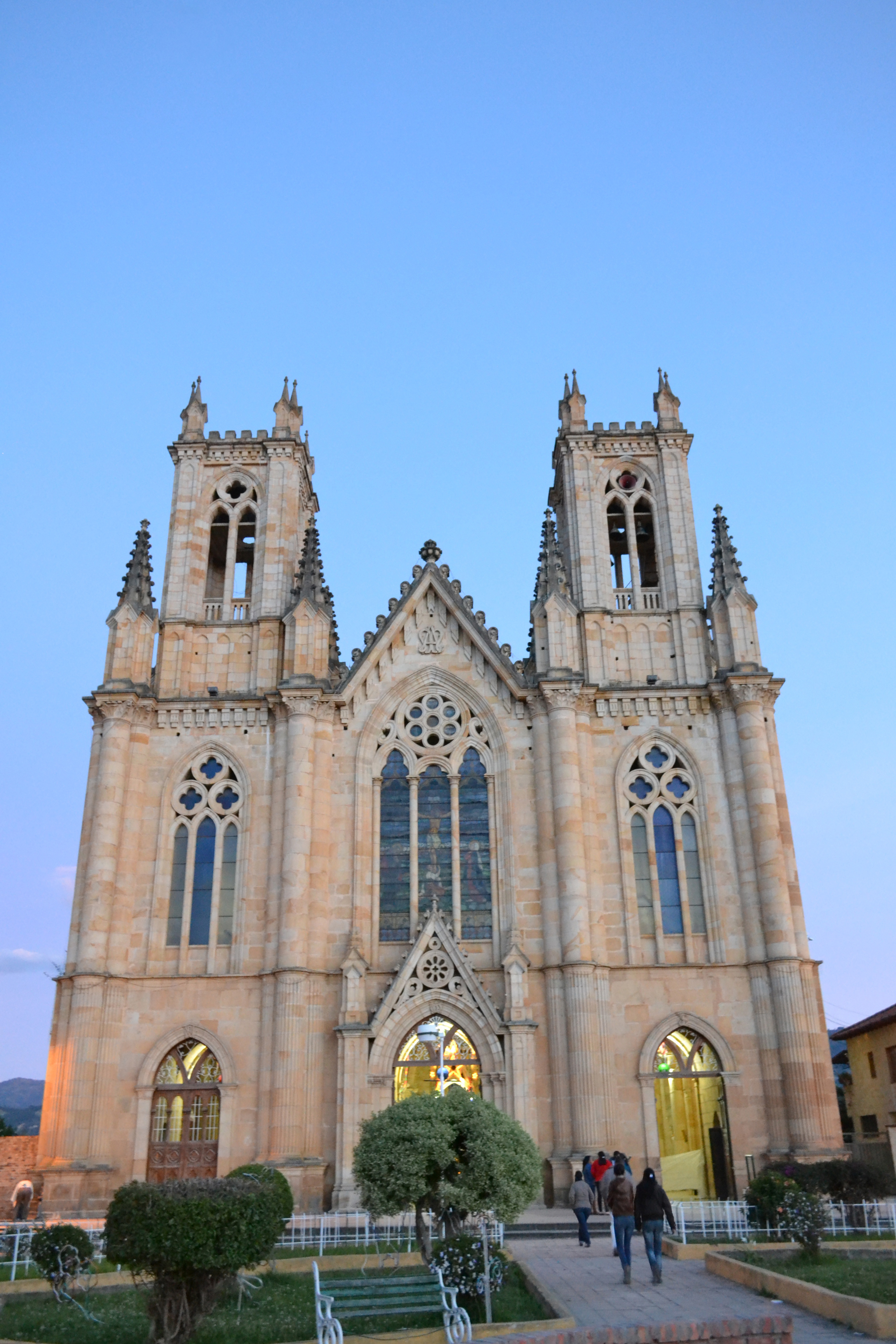|
Bochica
Bochica (also alluded to as Nemquetaha, Nemqueteba and Sadigua) is a mythical figure in the religion of the Muisca, who inhabited the ''Altiplano Cundiboyacense'' before the Spanish invasion by conquistadors in the central Andean highlands of present-day Colombia. There is little documentation concerning Bochica, who was mentioned by name in records from 1563 from Ubaque. "Bochica was variously described by witnesses as a building which elchorPérez de Arteaga had destroyed -- as the father of a 'tiger' -- perhaps a puma or jaguar that had recently been attacking travellers of local roads, and as an 'idol'. When asked who Bochica was, Ubaque replied that 'he is a wind' -- (''un viento'') -- and that he was in the site of the building that the Spanish had destroyed." In the 1688 work, ''Historia general de las conquistas del Nuevo Reyno de Granada'', by Spanish bishop Lucas Fernández de Piedrahita, Bochica had "become a civilising hero, descending to earth to found the Muisca rel ... [...More Info...] [...Related Items...] OR: [Wikipedia] [Google] [Baidu] |
Muisca Religion
Muisca religion describes the religion of the Muisca people, Muisca who inhabited the central highlands of the Colombian Andes before the Spanish conquest of the Muisca. The Muisca formed a Muisca Confederation, confederation of holy Muisca rulers, rulers and had a variety of deity, deities, temples and rituals incorporated in their culture. Supreme being of the Muisca was Chiminigagua who created light and the Earth. He was not directly honoured, yet that was done through Chía (goddess), Chía, goddess of the Moon, and her husband Sué, god of the Sun. The representation of the two main celestial bodies as husband and wife showed the complementary character of man and Women in Muisca society, woman and the sacred status of marriage.Muisca religion - Pueblos Originarios - accessed 04-05-2016 The Muisca worshipped the ... [...More Info...] [...Related Items...] OR: [Wikipedia] [Google] [Baidu] |
Idacansás
Idacansás, Idacansas, Idacanzas or Iduakanzas was a mythical ''cacique'' who was said to have been the first priest of the sacred city of Sugamuxi, present-day Sogamoso, Colombia, then part of the territories of the Muisca. He is characterized by his great magical powers as he could make rain and hail and transmit diseases and warmth. Background In the centuries before the arrival of the Spanish conquistadors, the central highlands of Colombia consisted of the Muisca Confederation, ruled by ''zaques'' from Hunza and ''zipas'' from Bacatá. Other areas, such as the territories surrounding Sogamoso were ruled by ''caciques''; respected religious nobility. Before the time of the first confirmed human rulers Hunzahúa, who is considered an heir of Idacansás, and Meicuchuca, inaugurated in 1450, the chronicles are based on Folklore. Mythography ''Cacique'' Idacansás was together with Bochica the priest of the Sun, with his Sun Temple located in Sugamuxi. Allegedly the only '' ... [...More Info...] [...Related Items...] OR: [Wikipedia] [Google] [Baidu] |
Muisca People
The Muisca (also called the Chibcha) are indigenous peoples in Colombia and were a Pre-Columbian culture of the Altiplano Cundiboyacense that formed the Muisca Confederation before the Spanish colonization of the Americas. The Muisca speak Muysccubun, a language of the Chibchan language family, also called ''Muysca'' and ''Mosca''. The first known contact with Europeans in the region was in 1537 during the Spanish conquest of New Granada. In New Spain, Spanish clerics and civil officials had a major impact on the Muisca, attempting to Christianize and incorporate them into the Spanish Empire as subjects. Postconquest Muisca culture underwent significant changes due to the establishment of the New Kingdom of Granada. Sources for the Muisca are far less abundant than for the Aztec Empire of Mesoamerica or the Inca Empire and their incorporation to the Spanish Empire during the colonial era. In the New Kingdom of Granada and into the colonial era, the Muisca became " ... [...More Info...] [...Related Items...] OR: [Wikipedia] [Google] [Baidu] |
Chiminigagua
Chiminigagua, Chiminichagua or Chimichagua was the supreme being, omnipotent god and creator of the world in the religion of the Muisca.Ocampo López, 2013, Ch.1, p.15 The Muisca and their confederation were one of the four advanced civilizations of the Americas and developed their own religion on the Altiplano Cundiboyacense in the Andes. Description Chiminigagua was a universally good god and represented the only light that existed when it was night time. When the world was created there was only darkness and the only light was given by Chiminigagua. When Chiminigagua decided to shine light across the Universe, she first opened her gigantic belly from where light was shining. She then created two large black birds and launched them into space. The birds spread light from their beaks which produced light in the cosmos. Thus she created light and everything in the world. Chiminigagua showed the importance of her important gods Chía (the Moon), Sué (the Sun) and Cuchavira ( ... [...More Info...] [...Related Items...] OR: [Wikipedia] [Google] [Baidu] |
Pasca
Pasca is a town and municipality in the Cundinamarca Department, Cundinamarca department of Colombia located in the Andes. It belongs to the Sumapaz Province. Pasca is situated on the Altiplano Cundiboyacense at a distance of from the capital Bogotá. It borders Fusagasugá, Sibaté and Soacha in the north, Bogotá D.C. in the north and east, Arbeláez in the south and Fusagasugá in the west. Is the entrance to the Páramo del Sumapaz, the biggest ecosystem in its genre in the world. The urban center is located at an altitude of and the altitude ranges from to .Official website Pasca Etymology Pasca in the Chibcha language means "father's enclosure", according to Acosta Ortegón. (1999[...More Info...] [...Related Items...] OR: [Wikipedia] [Google] [Baidu] |
Harper & Brothers
Harper is an American publishing house, the flagship Imprint (trade name), imprint of global publisher HarperCollins, based in New York City. Founded in New York in 1817 by James Harper (publisher), James Harper and his brother John, the company operated as J. & J. Harper until 1833, when it changed its name to Harper & Brothers, reflecting the inclusion of Joseph and Fletcher Harper. Harper began publishing ''Harper's Magazine'', ''Harper's Weekly'', and other periodicals beginning in the 1850s. From 1962 to 1990, the company was known as Harper & Row after its merger with Row, Peterson & Company. Harper & Row was purchased in 1987 by News Corporation and combined with William Collins, Sons, its United Kingdom counterpart, in 1990 to form HarperCollins, although the Harper name has been used in its place since 2007. History J. & J. Harper (1817–1833) James Harper (publisher), James Harper and his brother John, printers by training, started their book publishing business, J. ... [...More Info...] [...Related Items...] OR: [Wikipedia] [Google] [Baidu] |
Sun Temple (Sogamoso)
The Sun Temple of Sogamoso was a temple constructed by the Muisca as a place of worship for their Sun god Sué. The temple was built in Sogamoso, Colombia, then part of the Muisca Confederation and called Sugamuxi. It was the most important temple in the religion of the Muisca. The temple was destroyed by fire brought by the Spanish conquistadores led by Gonzalo Jiménez de Quesada who was eager to find the legendary ''El Dorado''. A reconstruction has been built in the Archeology Museum of Sogamoso. Structure and worship The Temple of the Sun was built on the right banks of the small river Monquirá. The temple was a large round structure made of poles and clay with a roof made of reed. The temple did not have any windows. The columns surrounding the temple were built in three concentric rings made of wood harvested in Casanare. The temple represented the cosmos and was built to honour Sun god Sué. The temple also was a burial ground for the most important ''caciques'' and ... [...More Info...] [...Related Items...] OR: [Wikipedia] [Google] [Baidu] |
Sogamoso
Sogamoso () is a city in the department of Boyacá of Colombia. It is the capital of the Sugamuxi Province, named after the original Sugamuxi. Sogamoso is nicknamed "City of the Sun", based on the original Muisca tradition of pilgrimage and adoring their Sun god Sué at the Sun Temple. The city is located at an altitude of on the Altiplano Cundiboyacense in the Eastern Ranges of the Colombian Andes. Etymology Sogamoso is named after Sugamuxi or Suamox, the original name in Chibcha for the city and Sugamuxi, the last '' iraca'' of the sacred City of the Sun. Suamuxi means "Dwelling of the Sun".Etymology Sogamoso Excelsio.net. Knowledge about Sugamuxi has been provided by Pedro Simón and the German countess < ... [...More Info...] [...Related Items...] OR: [Wikipedia] [Google] [Baidu] |
Firavitoba
Firavitoba is a town and municipality in Sugamuxi Province, a subregion of the Departments of Colombia, department of Boyacá Department, Boyacá in Colombia. Before Spanish colonization, Firavitoba was part of the Muisca Confederation of the Chibcha people in the highlands of the Cordillera Oriental (Colombia), Eastern Cordillera of the Andean natural region, Colombian Andes. Firavitoba belonged to the Iraca or Suamox state which, uniquely, did not observe a hereditary leadership system but elected its ruler alternately from Firavitoba and Tobasá, two of its many tribes. Firavitoba is distinguished by its Gothic Revival architecture, neo-Gothic church, the third biggest in Colombia. Nuestra Señora de las Nieves (Our Lady of the Snows) was built between 1873 and 1976, entirely of stone sourced from nearby Sogamoso's Pedregal district. Etymology The name Firavitoba derives from the Muysccubun language of the Muisca people. One etymology gives the root words as ''fiba'' ("air" ... [...More Info...] [...Related Items...] OR: [Wikipedia] [Google] [Baidu] |
Pesca
Pesca is a town and municipality in the Colombian Department of Boyacá, part of the Sugamuxi Province, a subregion of Boyacá. The town is located in the Eastern Ranges of the Colombian Andes at altitudes between and . Pesca is west from the department capital Tunja and borders Firavitoba in the north, Iza in the northeast, Tuta in the northwest, in the east Tota, Zetaquirá in the south, Rondón and Siachoque in the southwest and Toca in the west. Notes Pesca is east from the department capital Tunja Etymology In the Chibcha language of the Muisca, Pesca means "strong enclosure". History Before the arrival of the Spanish in the 1530s, Pesca was part of the Muisca Confederation, a confederation of different rulers; ''zaques'' based in Hunza, ''zipas'' ruling from Muyquytá and ''caciques'' in other territories. Pesca was reigned by the ''iraca'' of sacred City of the Sun Sugamuxi, now called Sogamoso. Modern Pesca was founded by Juan de Sanct Martín on De ... [...More Info...] [...Related Items...] OR: [Wikipedia] [Google] [Baidu] |
Tota, Boyacá
Tota is a town and municipality in the department of Boyacá, Colombia, part of the Sugamuxi Province. Tota is located approximately 40 km from Sogamoso and the municipality borders in the north Cuítiva, Aquitania in the east, Zetaquirá and San Eduardo in the south and westward of Tota the municipality of Pesca is located.Official website Tota - accessed 02-05-2016 Nearby and named after the village is , the largest lake of Colombia. History Before the of the central highlands of Colombia ( |



